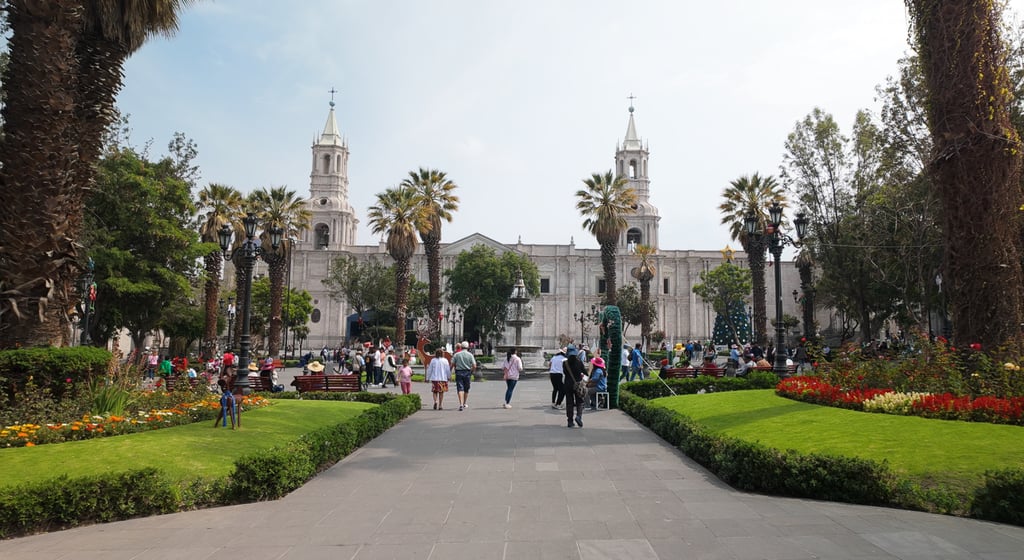Things to Know Before You Go to Arequipa, Peru


Arequipa Should Be on Your Travel Radar
When travelling to Peru, most people include Lima, Cusco, the Sacred Valley and Machu Picchu on their itinerary, as these places are well-known to many travellers. However, the lesser known city of Arequipa is also worthy of being on your Peru itinerary.
Founded in 1540 by the Spanish, Arequipa has come to be known as the Cuidad Blanco or "White City" because much of the city has been built with a white volcanic stone called sillar which can be found in abundance around Arequipa. Sillar was used extensively during the colonial period and the historic centre of Arequipa, largely built from this beautiful white stone, is a UNESCO World Heritage Site.
For history lovers, Arequipa is also home to the Santa Catalina Monastery, founded in the 16th century and covers 20,000 square metres with several colourful neighbourhoods featuring narrow streets, living quarters, courtyards, gardens, kitchens, and a chapel. You really get a sense of how the nuns lived here during the colonial era.
Many visitors also base themselves in the city for treks to the Colca Canyon and nearby volcanos such as Misti and Chachani. During their treks, visitors hope to catch a glimpse of an Andean condor, one of the largest flying birds on our planet. With a wingspan of 3.3 metres (10 feet) and weighing up to 15kg (33 pounds), Andean condors can live up to 80 years old and the Incas considered them to be divine messengers.
Arequipa is also famous for its traditional food, as well as its picanterias - which are local restaurants serving traditional dishes, including many which originate in the city.
Arequipa has something for all kinds of travellers whether you are a history buff, culture vulture, nature lover or foodie. For more information to help plan your trip, check out the Wander Yonder YouTube video below for an overview of Arequipa, Peru, including travel highlights of the best things to see, do and eat in this beautiful white city.
Arequipa is Generally Safe for Tourists
Although Arequipa is generally considered to be safe, it does experience petty crime. Be mindful of your belongings and surroundings at all times - and avoid doing anything that will make you a target, including wearing expensive jewellery, or flashing your expensive phone or camera, particularly while you are outside of the historic centre. Extra precaution should always be taken at night to avoid being alone on dark empty streets.
The Tap Water is Not Safe to Drink
Most people know the water is not safe to drink in Peru. However, many hotels and Airbnbs include drinking water as part of their services for guests through large refillable water containers or built-in water filter systems. I suggest asking if drinking water is included before you book a place - or be prepared to buy bottled water constantly.
Money Matters
The sol (S/) is the official currency in Peru but American dollars are accepted at many restaurants, bars, and hotels - though you are better off using the local currency to avoid the terrible exchange rates offered for your cash dollars. Many of the local ATMs also charge very high fees ($10-12) for cash withdrawals, but I found that the ATMs labelled "MultiRed" which are often connected to "Banco de la Nacion" do not charge a local withdrawal fee and allow up to 400 soles per transaction. If you use these ATMs, you only have to worry about the withdrawal fees from your own bank, if applicable. Credit cards are also widely accepted at restaurants, cafes and bars, but sometimes they add an extra 5 percent for payment by card. Cash is king in Peru.

